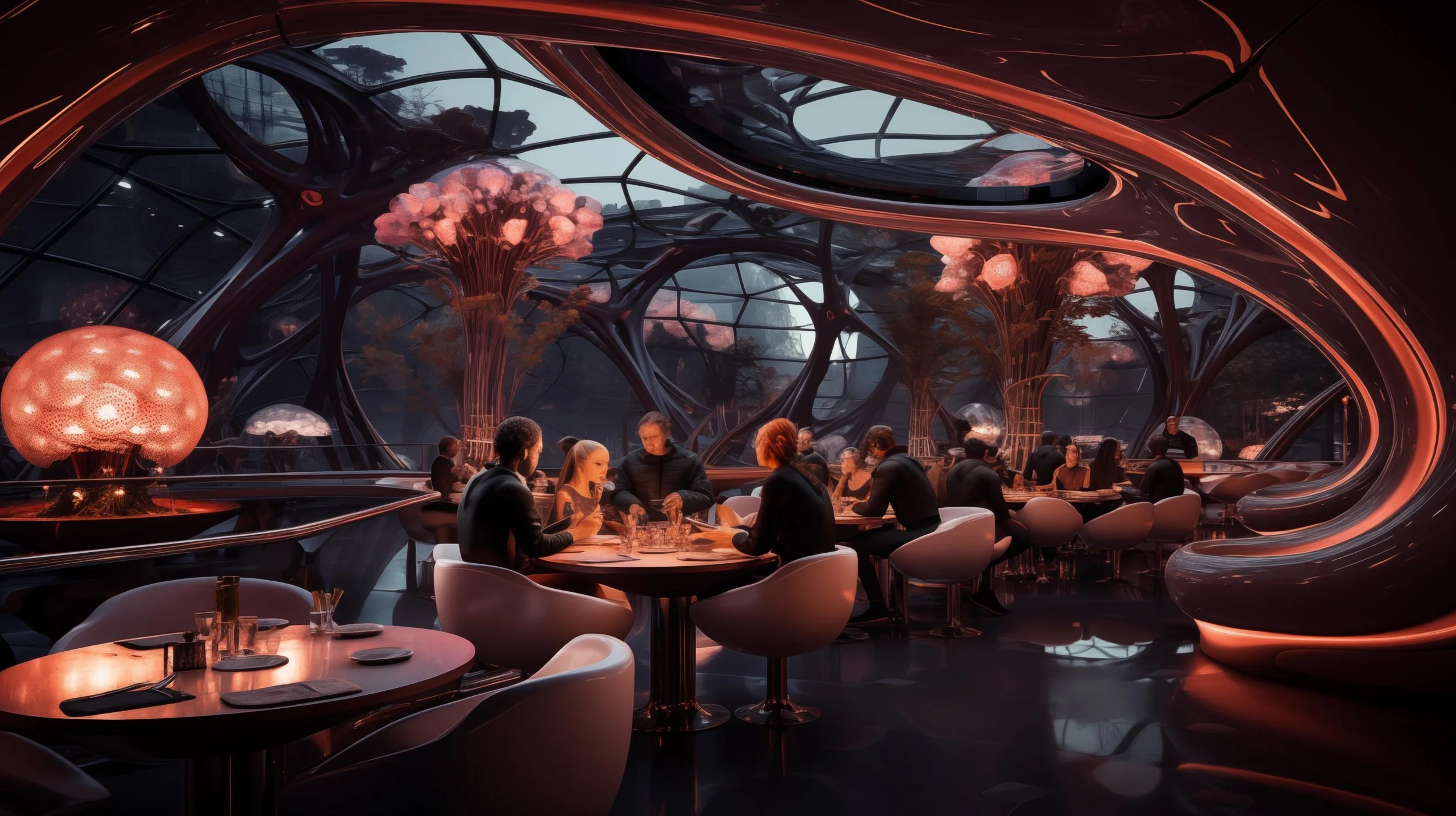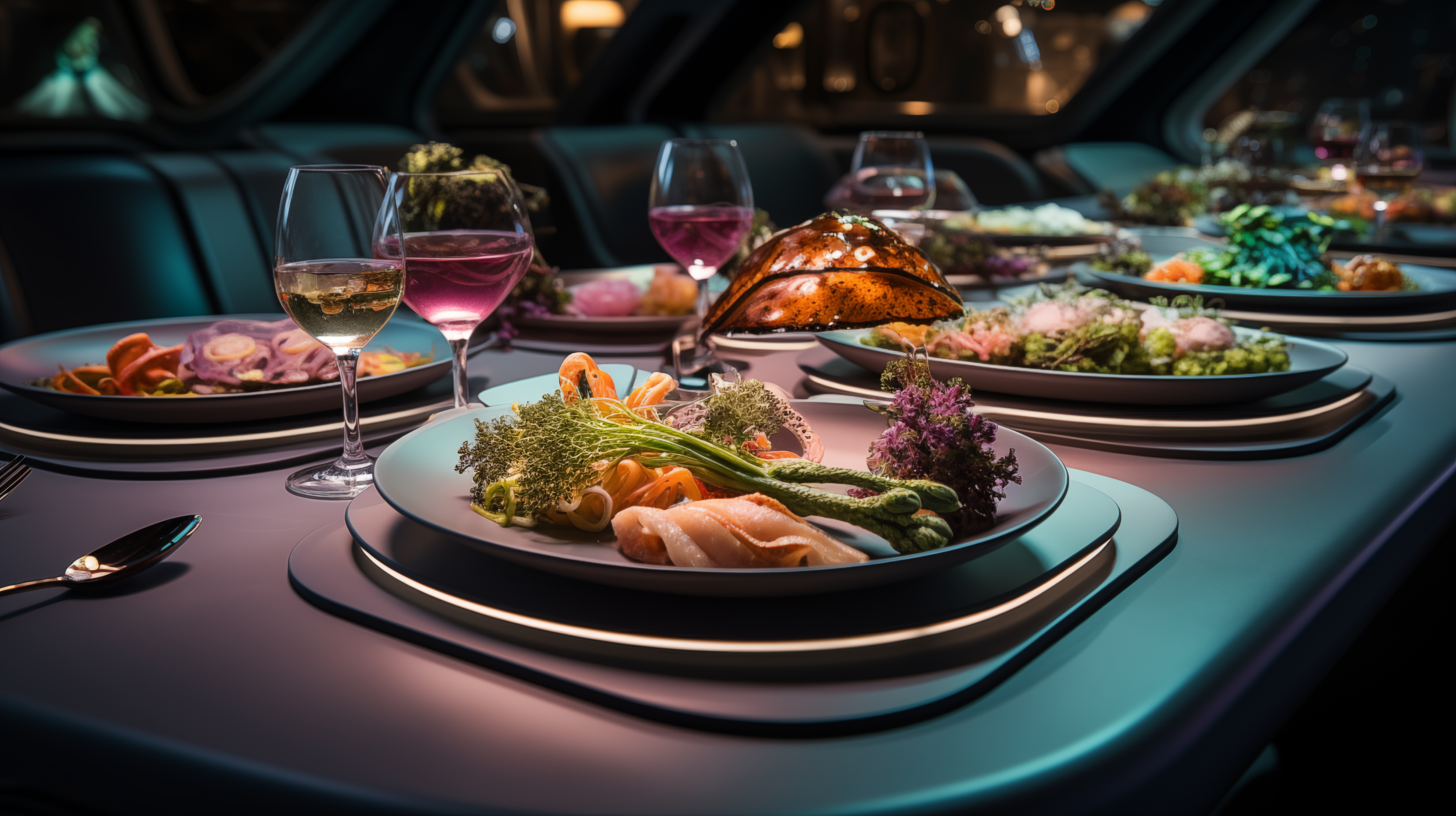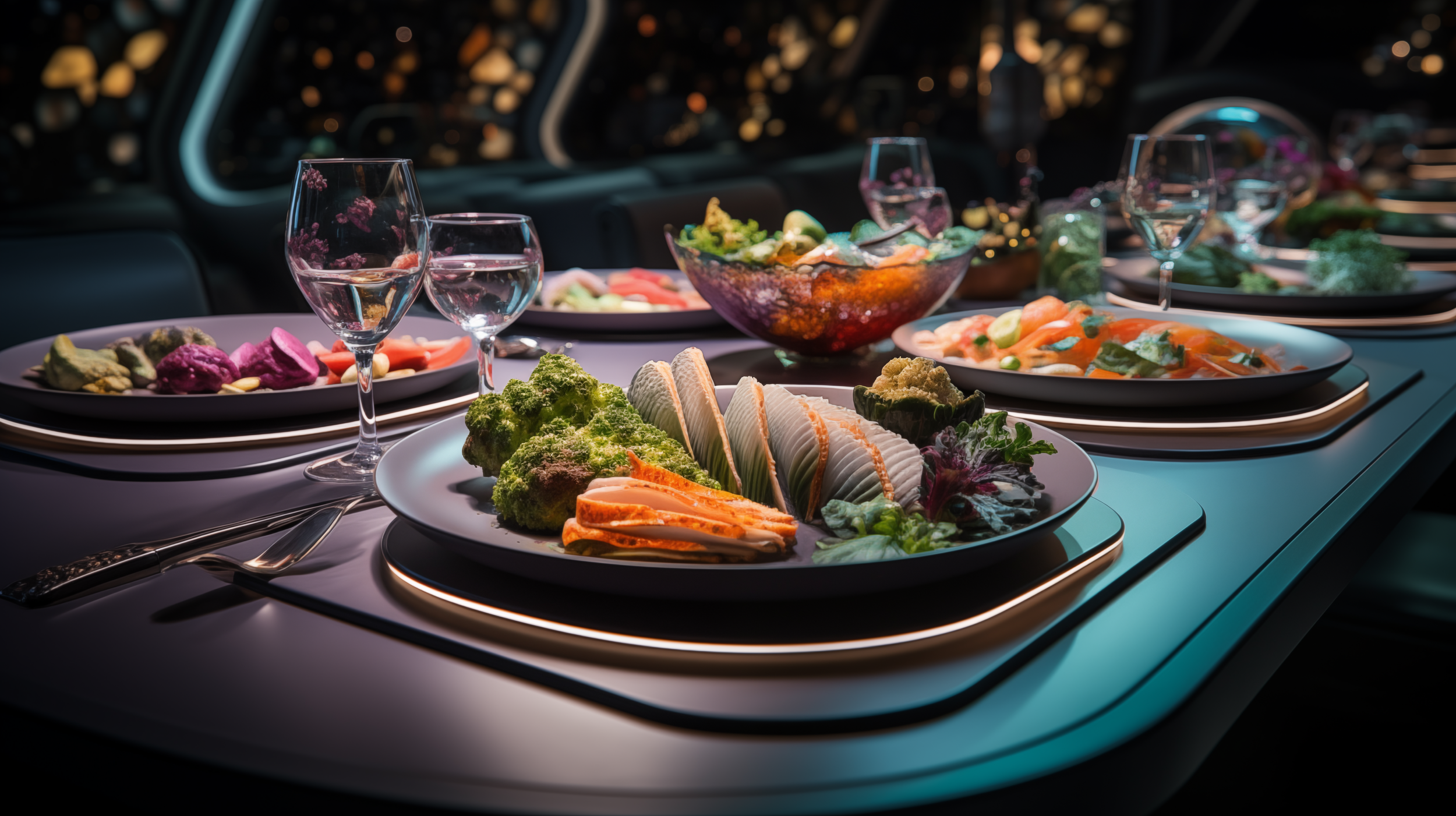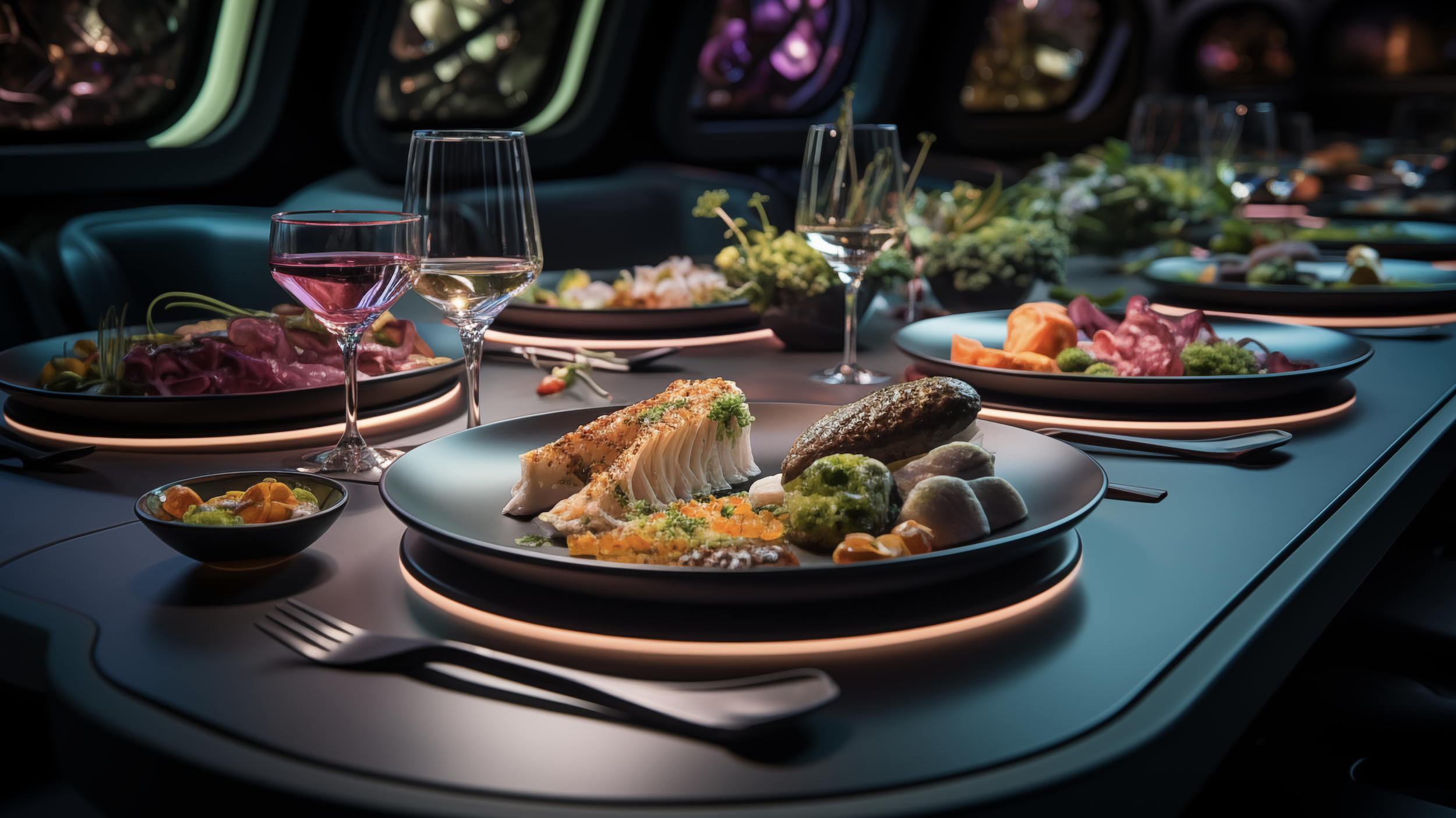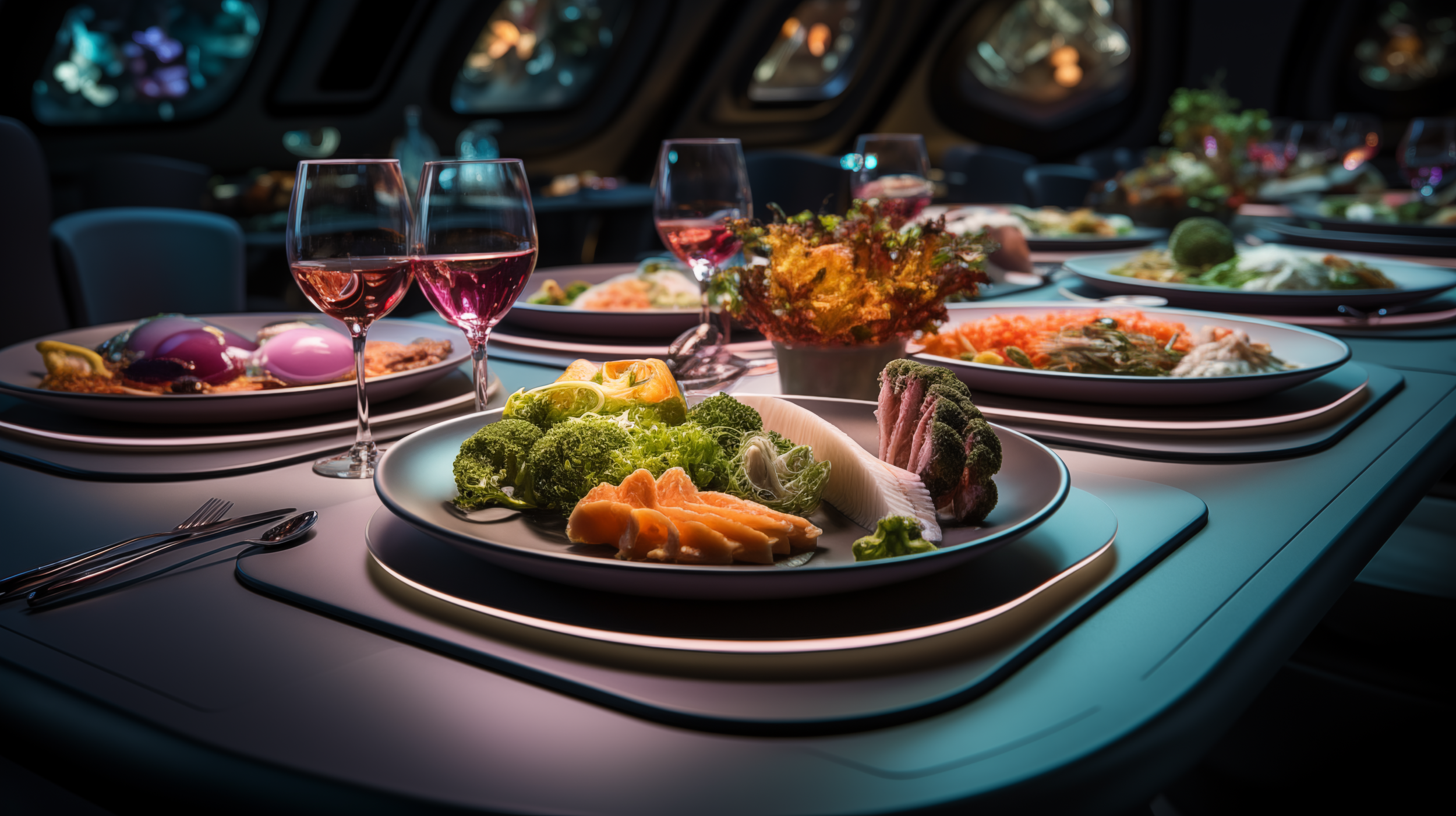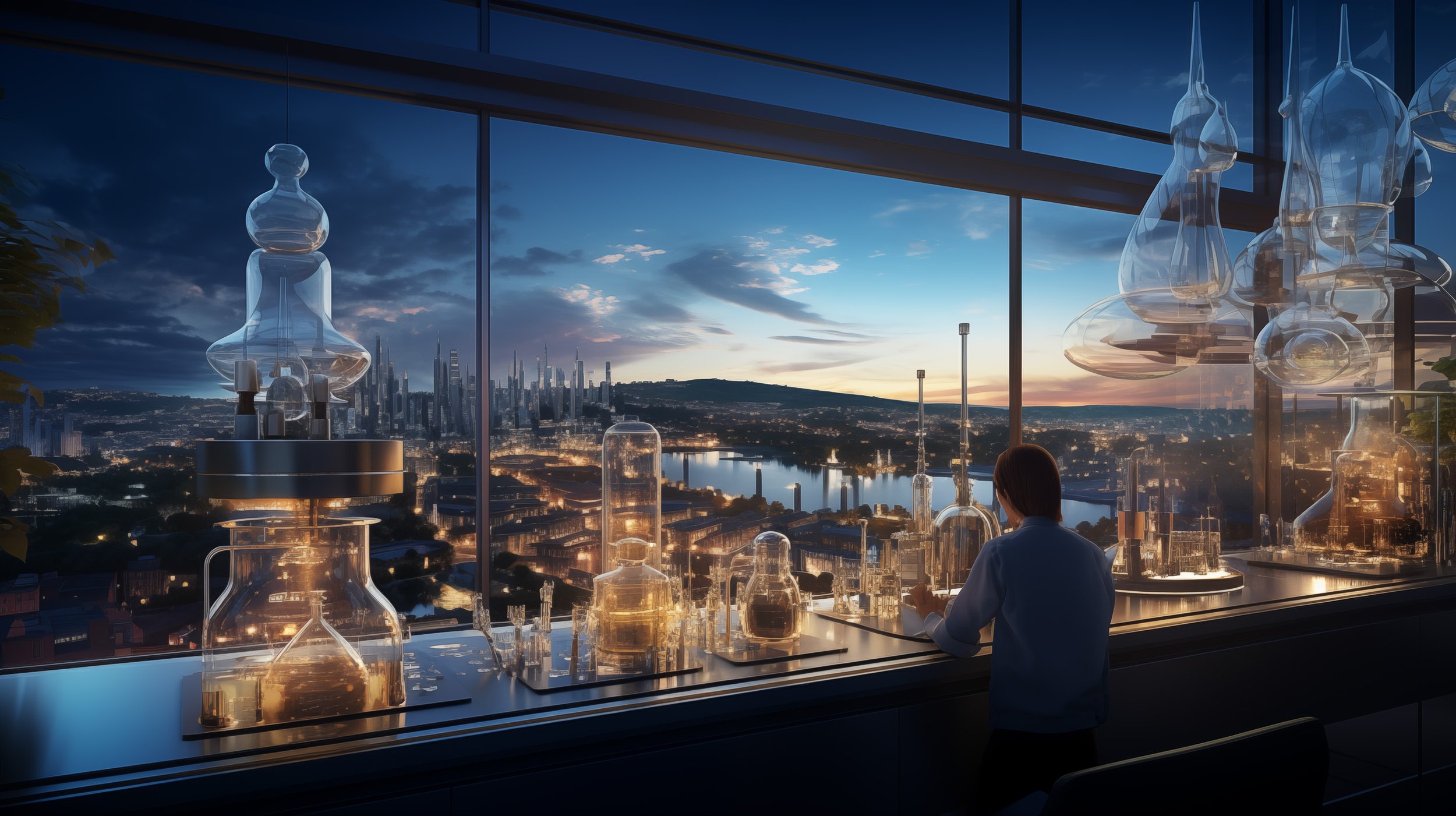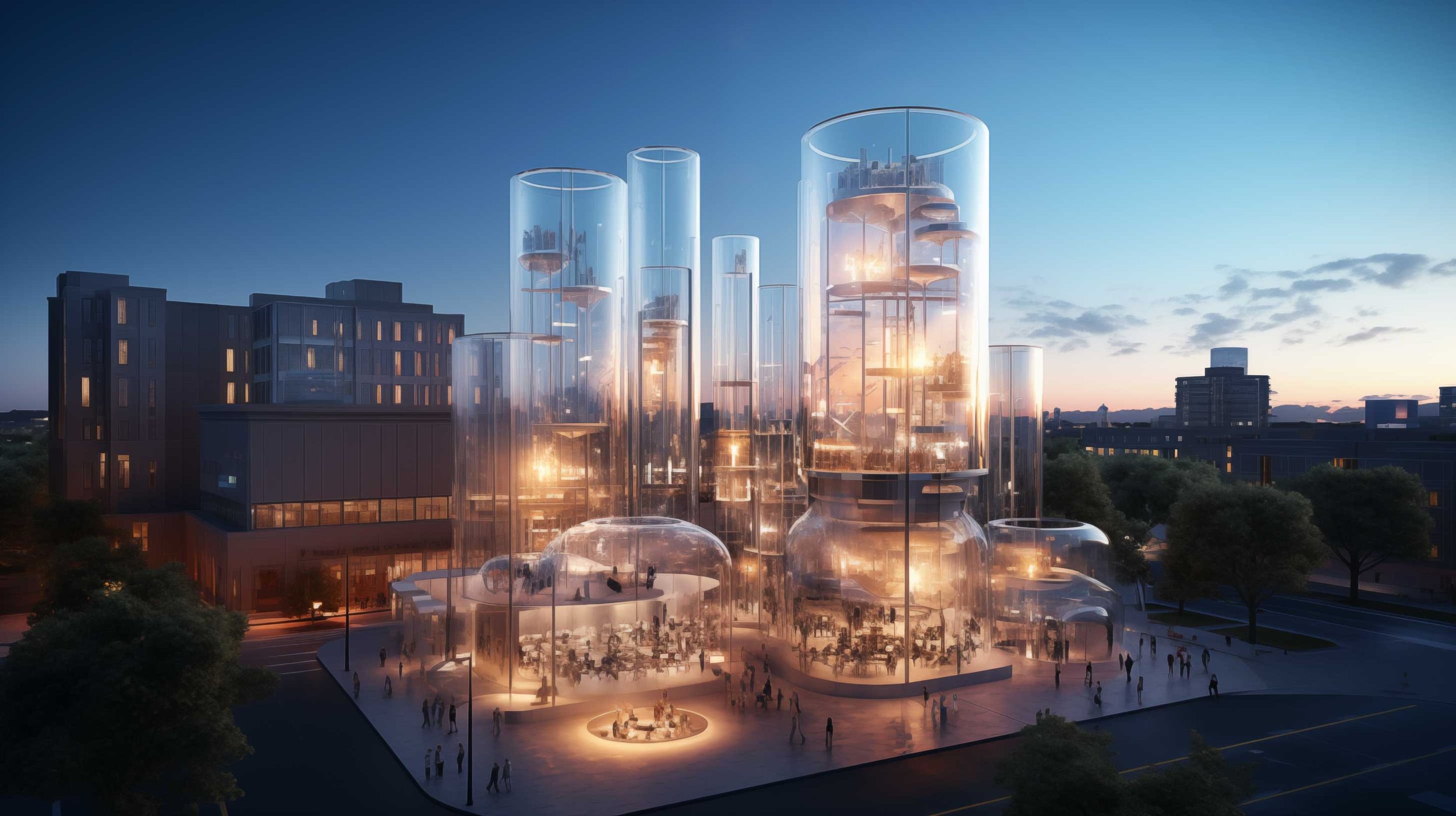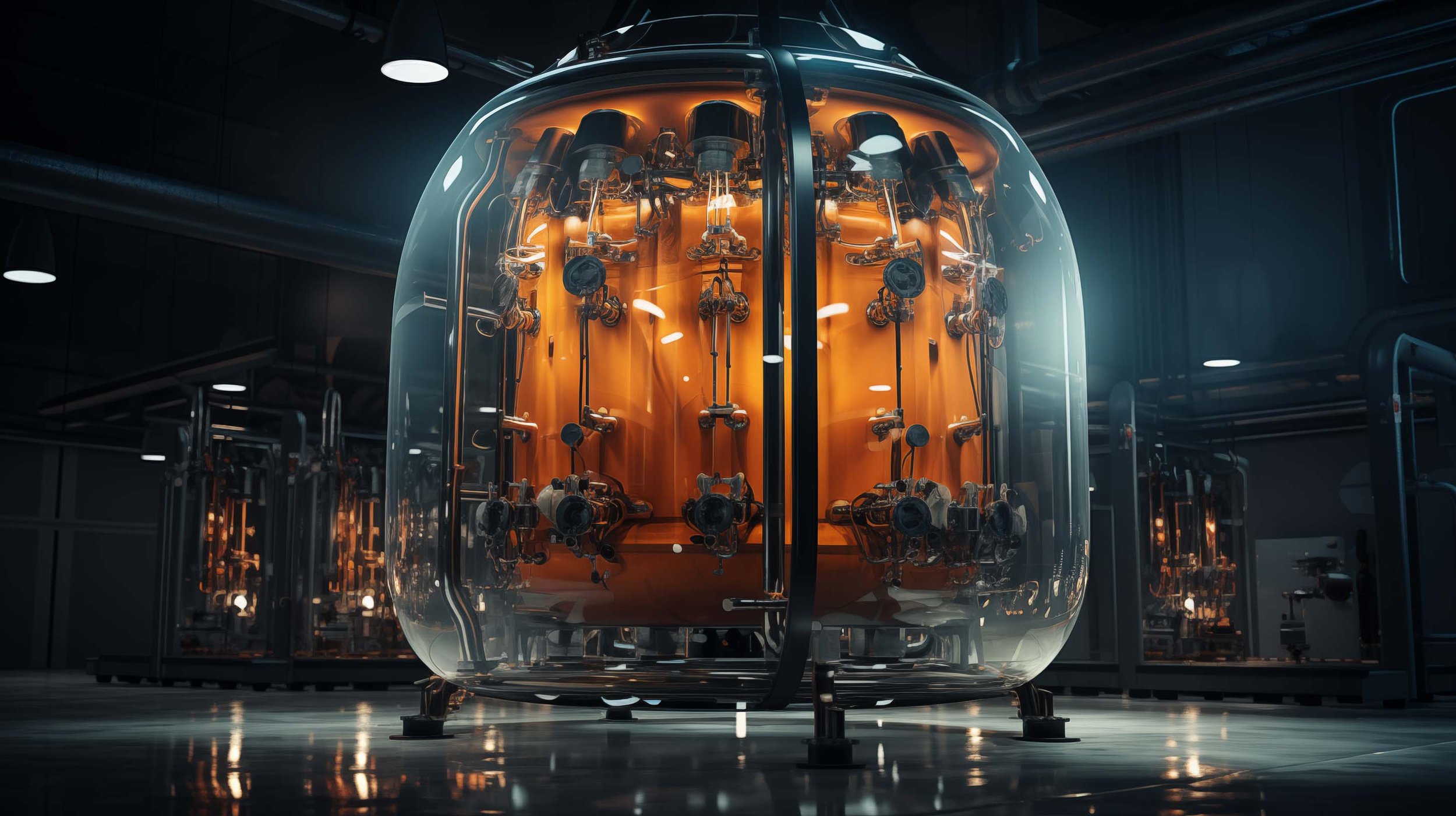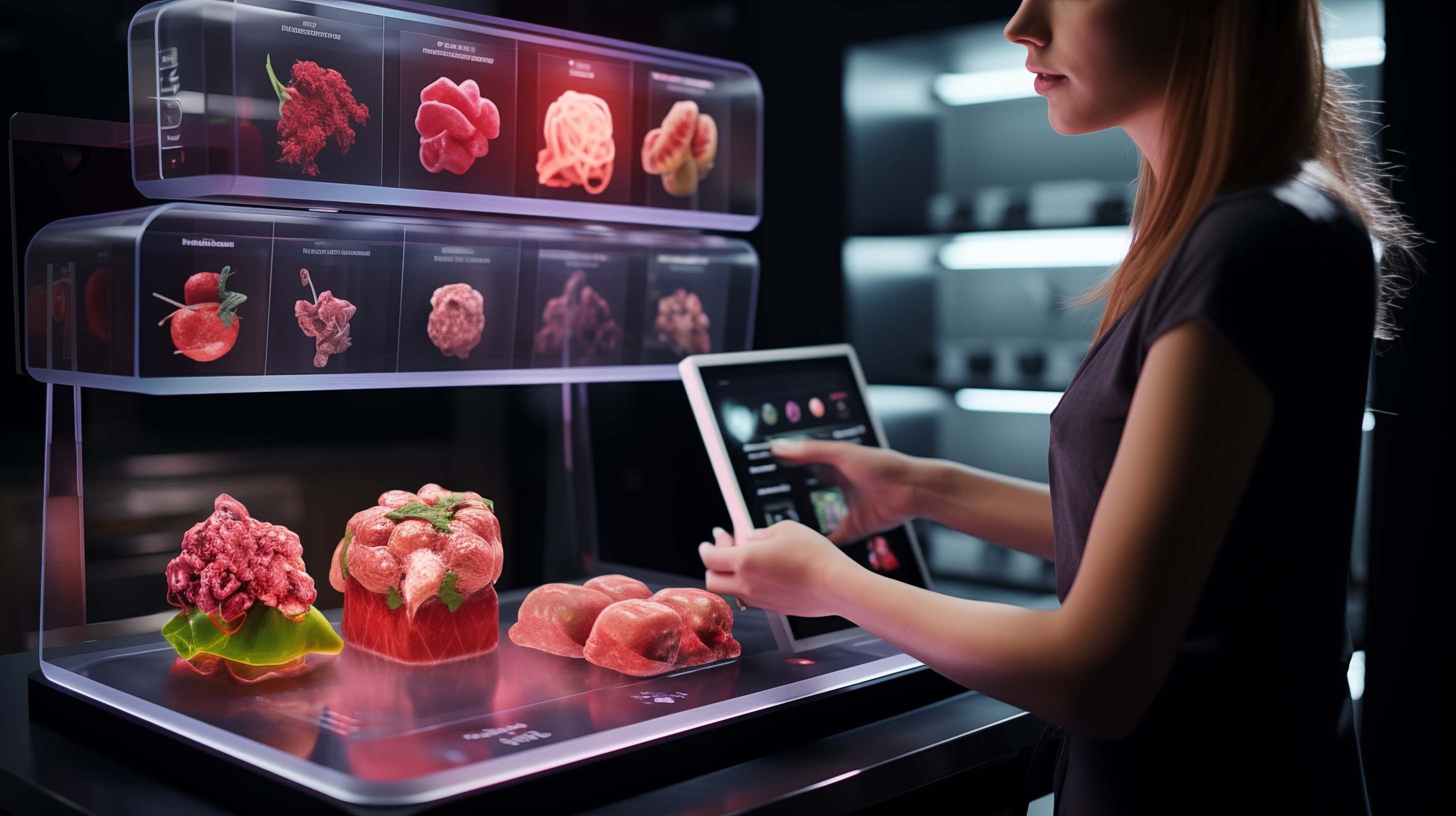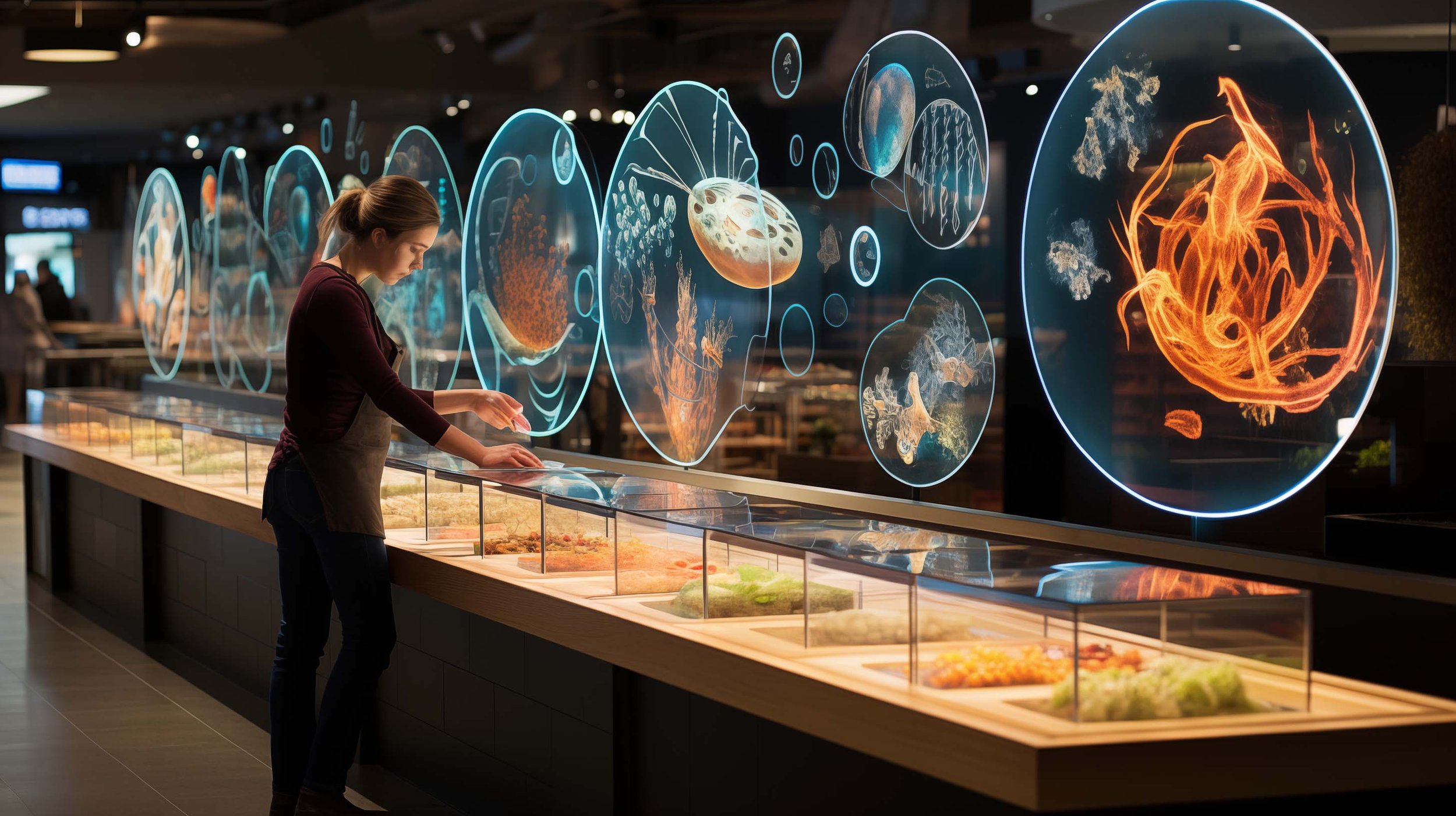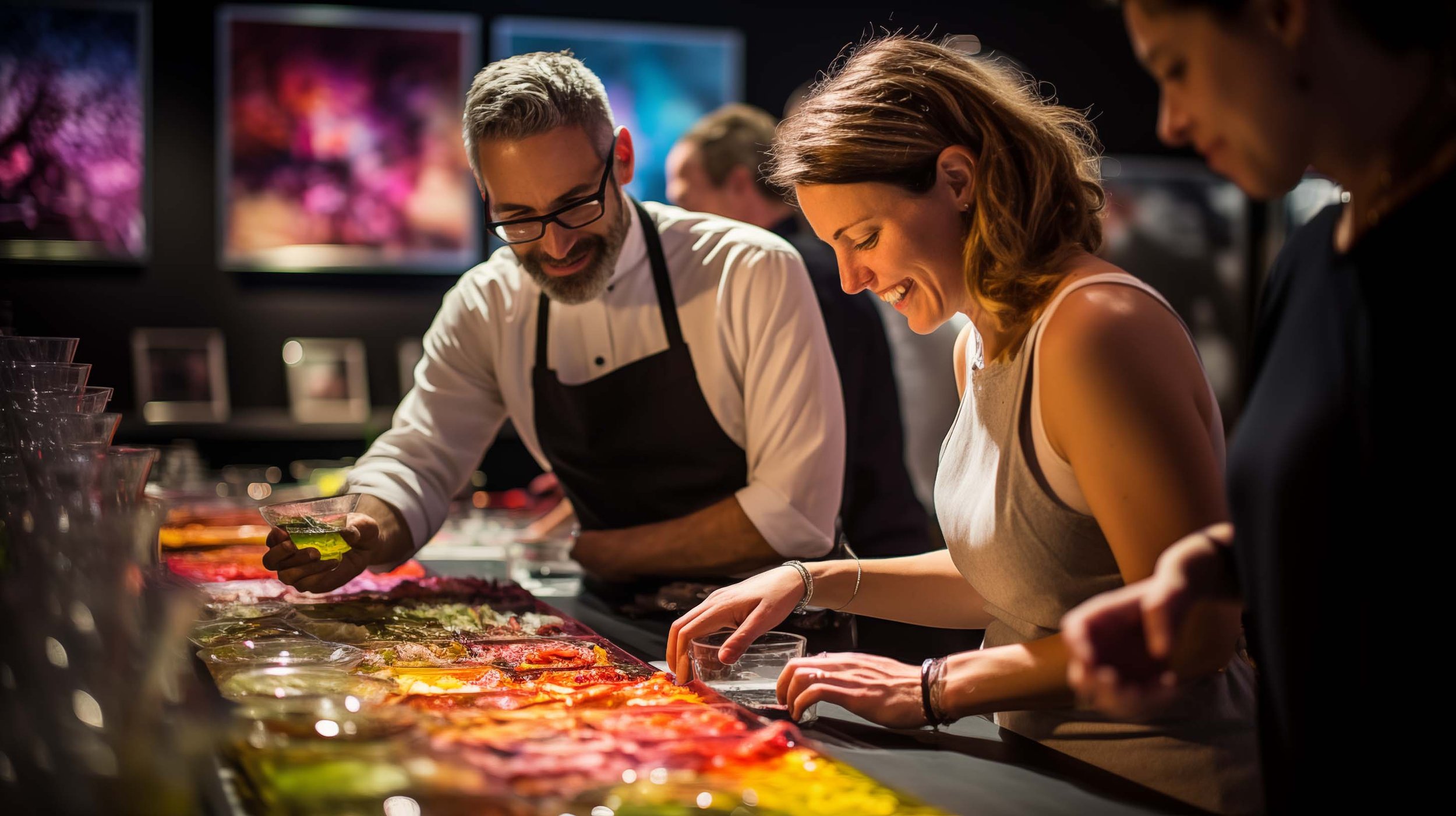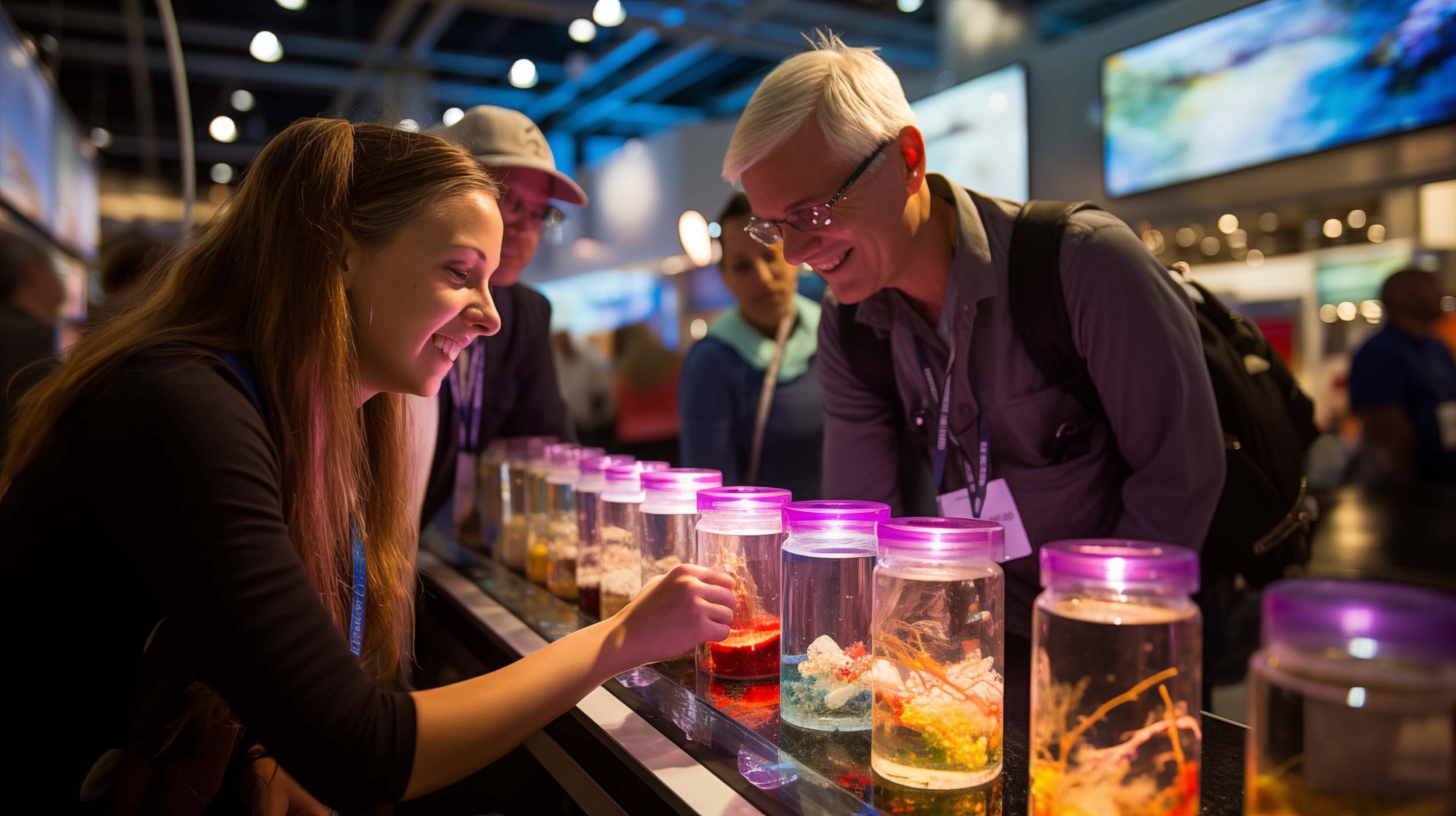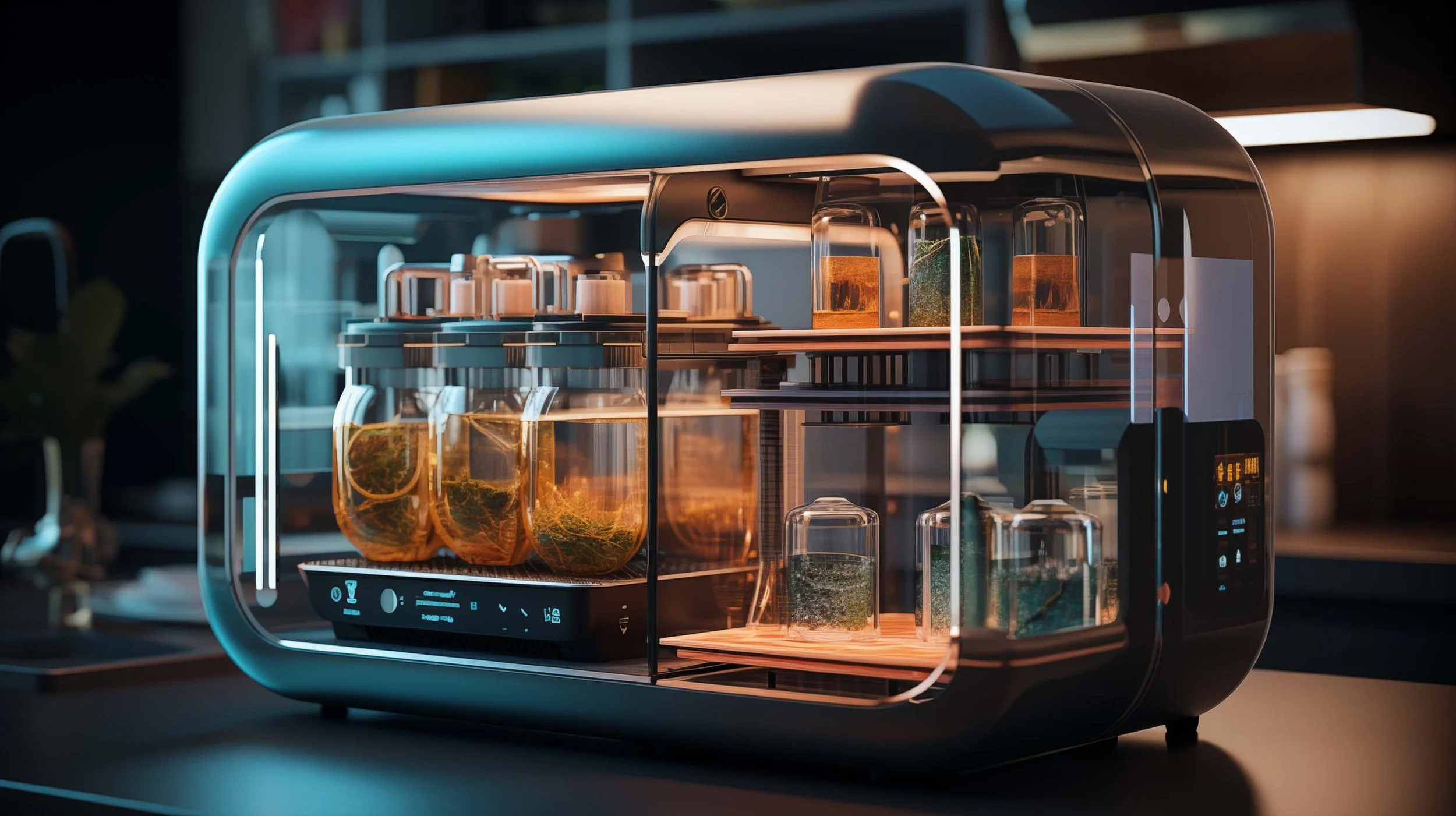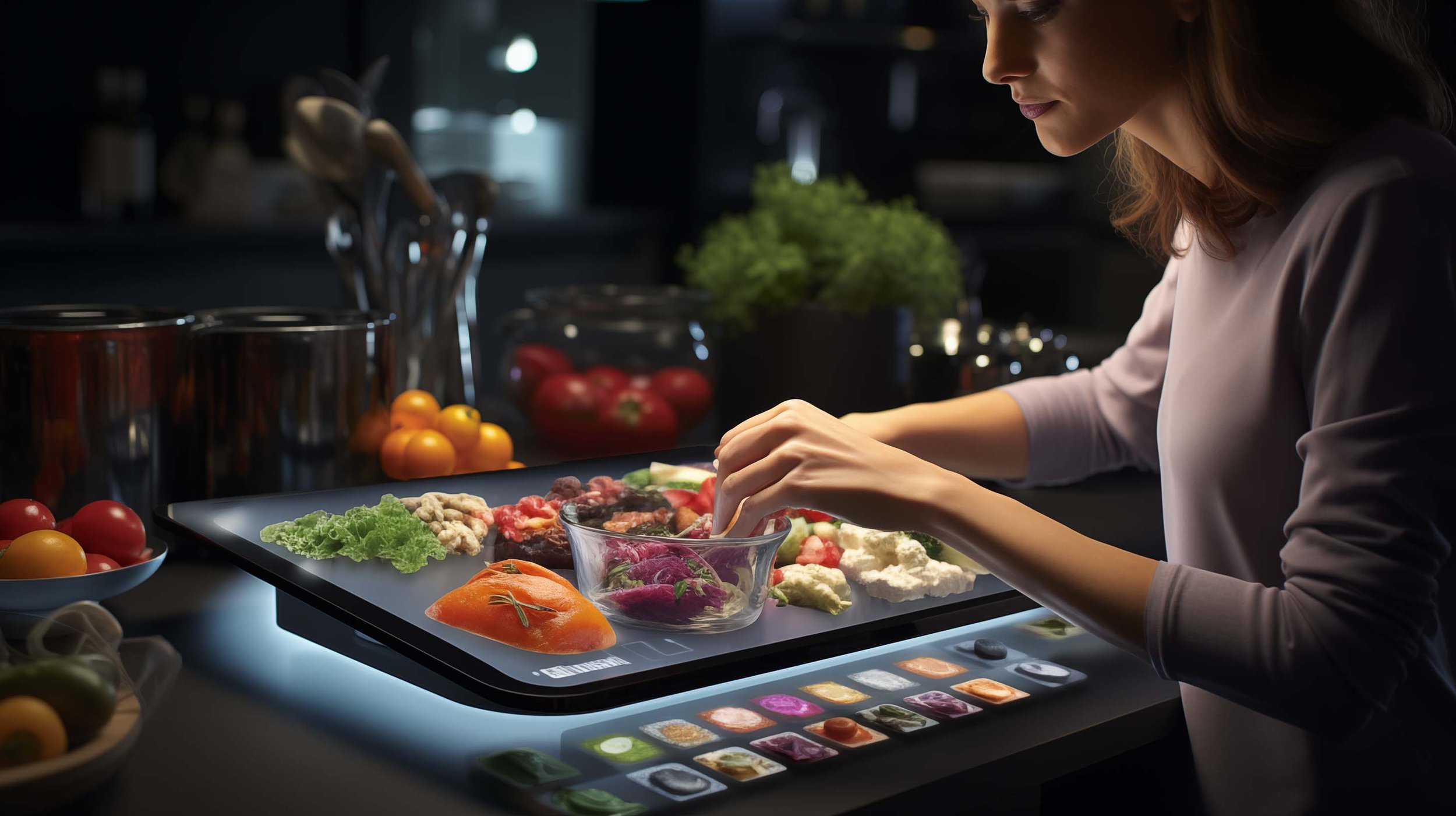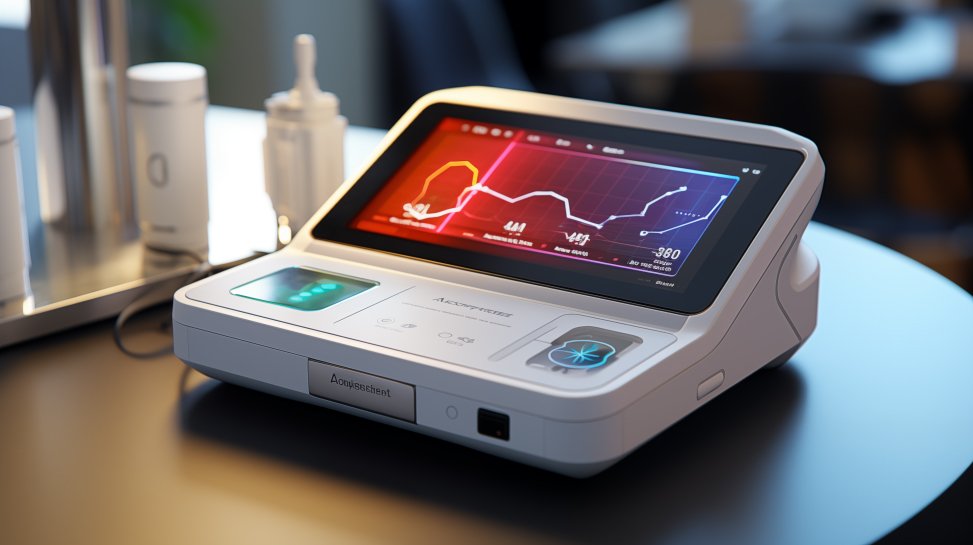The Microbial Renaissance: A Culinary Tech Revolution
Year of project: 2023 - early 2024
Project by: Chloé Rutzerveld
Funded by: S+T+ARTS, MUSAE project
Consortium Partners MUSAE: GLUON, Politechnico Milano, UB-ART, University Barcelona, UCD Dublin, PAL Robotics, ABACUS, MADE.
Keywords: Precision Fermentation, Consumer Acceptance, Reimagening Protein, Radical New Foods, Microbial-based Food, Food Design, AI, Co-creation Artificial Intelligence.
Future Food Scapes exhibition University Barcelona April 2024 | Final Scenarios MUSAE residency S+T+ARTS project
What if.. the widespread adoption of microbial-based foods led to a paradigm shift in how society views and interacts with food?
How might this revolutionize culinary traditions, impact sustainability, and influence personal well-being on a global scale?
SCENARIO NARRATIVE
The Microbial Renaissance marks a transformative era in culinary practices and sustainable food innovation, with the culinary arts seamlessly transitioning to cutting-edge technology. The use of animal-based ingredients and the depletion of our natural resources have become outdated practices. What if we replace animal-based products with biologically identical ingredients synthesized directly by microorganisms, paving the way for a more sustainable world? Microbes, including bacteria, yeasts, fungi, and microalgae, can be used as ‘cell factories’. Scientists can ‘program’ these organisms to produce a specific protein, carbohydrate, fat, vitamin, or aroma in a growth tank. This is called precision fermentation. After harvesting the ingredients, they can take on any shape, flavor, and texture we want using digital production techniques. However, imagining interesting, novel food products that do not resemble existing products but still look edible is very difficult. By making smart use of artificial intelligence tools, we can go beyond the limitations of our own imagination and revolutionize the products we consume. But just adjusting our diet is not enough for this culinary transformation. A cultural revolution is needed – one that involves the entire community and generates enthusiasm for an alternative approach to food production, cooking, eating, and social interactions around food.
In the age of the Microbial Renaissance, each moment becomes an exploration, every dish a creation, and every encounter a celebration of the boundless possibilities unlocked by the wondrous world of microbial-based foods.
Experimental restaurants
The Experimental Restaurants in the Microbial Renaissance are avant-garde culinary hubs where diners experience a sensorially rich affair. Visually stunning dishes crafted from precision-engineered microbial ingredients take center stage, captivating the eyes. Soft ambient music complements lively discussions, fostering an atmosphere of culinary curiosity. Diners embark on a tactile journey, exploring a spectrum of textures heightened by the innovative use of 3D-printed meals.
AI Novel Food dishes
Global fusion dishes celebrate the diversity of microbial-based ingredients, offering a taste of sustainable and inventive gastronomy. Chefs showcase their culinary artistry, creating a multi-sensory experience that seamlessly integrates tradition and cutting-edge gastronomy on each plate.
High-tech Fermentation Labs
In high-tech fermentation labs, microbial-based ingredients are being produced. Next to being a production facility, it’s a place of research, analysis, training, citizen science education and wonder.
Microbial Celebrations
Microbial celebrations are vibrant gatherings in the microbial renaissance, where enthusiasts and community members converge to share and explore the diverse world of microbial-based foods. From tasting events featuring fermented delights to swapping unique microbial strains and hands-on fermentation workshops, these celebrations foster a sense of community, collaboration, and a deeper understanding of the culinary potential within the microbial realm. Attendees engage in a shared journey of discovery, celebrating the creativity and sustainability of microbial gastronomy.
Microbial Synthesizer
The Microbial Synthesizer is an advanced kitchen appliance that seamlessly integrates technology and culinary innovation. With a sleek design and a transparent chamber, it enables users to synthesize and customize microbial-based ingredients. Users can choose from a global catalog of pre-programmed strains or design custom combinations. The synthesizer employs precision fermentation techniques, allowing users to observe the microbial cultivation process in real-time. Once the synthesis is complete, the freshly harvested microbial ingredients can be instantly incorporated into culinary creations, potentially with additional features like integrated cooking or a 3D printer for futuristic meals.
Microbe Spectrum Scanner
The Microbe Spectrum Scanner is a compact, handheld, or slightly larger stationary device designed for analyzing and providing information about the microbial composition of various foods and surfaces. Equipped with advanced spectroscopy and genetic analysis technologies, it identifies and quantifies specific microbial strains present in a given sample. Users can quickly gain insights into the microbial diversity of their surroundings. The device features a touchscreen interface with intuitive controls and a small, detachable compartment for sample analysis. The MSS enhances awareness of the microbial world, offering a real-time, augmented reality view of microbial cultures, contributing to a deeper understanding of microbial dynamics and their role in various environments.
The Microbial Sanctuary
The Microbial Sanctuary serves as a specialized facility devoted to preserving and safeguarding rare and endangered microbial strains crucial for maintaining biodiversity in microbial-based food production. This sanctuary houses unique cultures vital for ecological balance and the development of resilient microbial communities. Access to this facility is restricted to prevent contamination, unauthorized experimentation, or accidental mishandling that could jeopardize the delicate ecosystems within the sanctuary. The preservation of these microbial strains is considered paramount for the stability and diversity of the microbial-based food system, making the Microbial Sanctuary a crucial hub for the protection and cultivation of microbial biodiversity.
Future Food Scapes Exhibition | University Barcelona April 2024
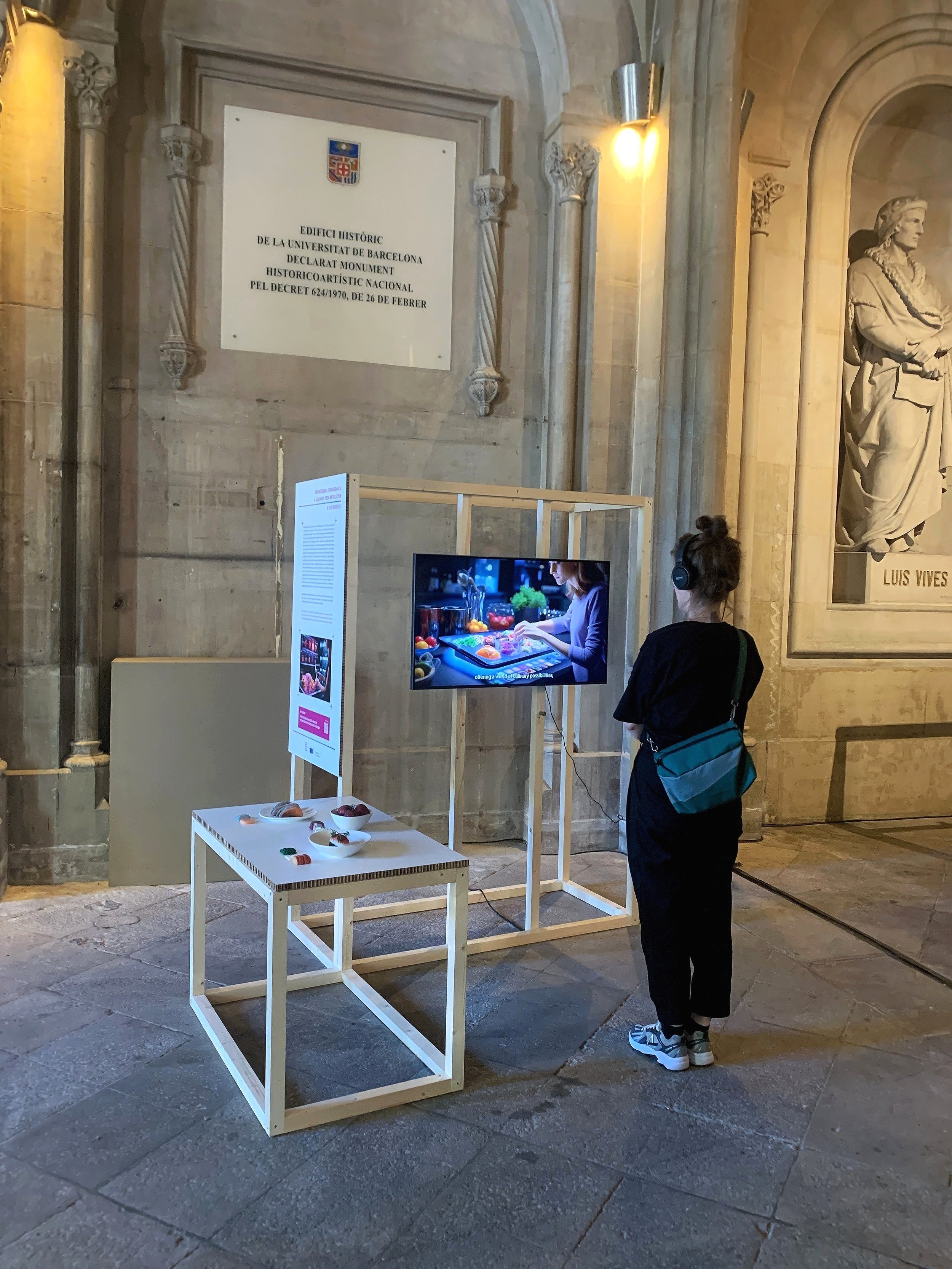
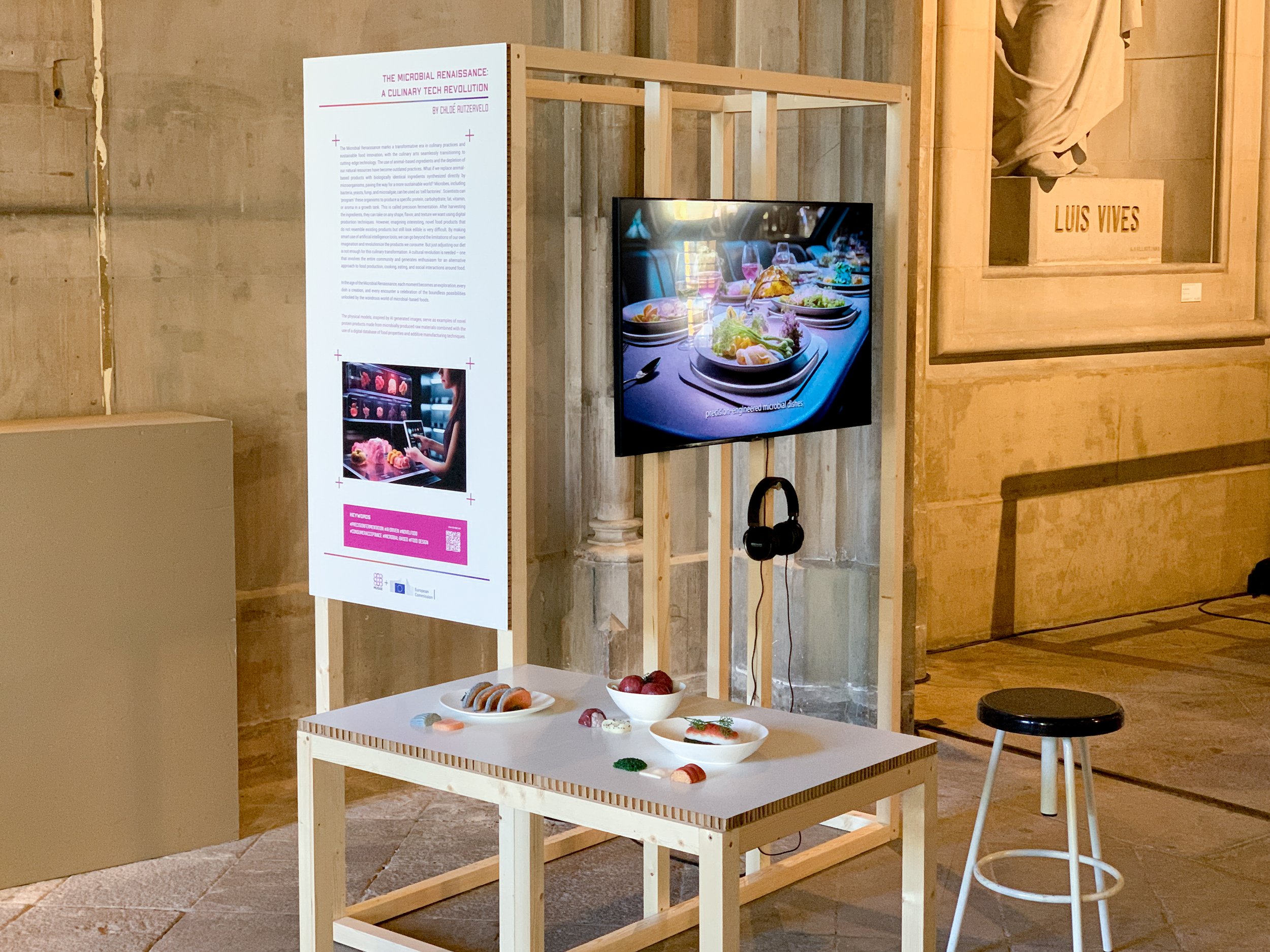
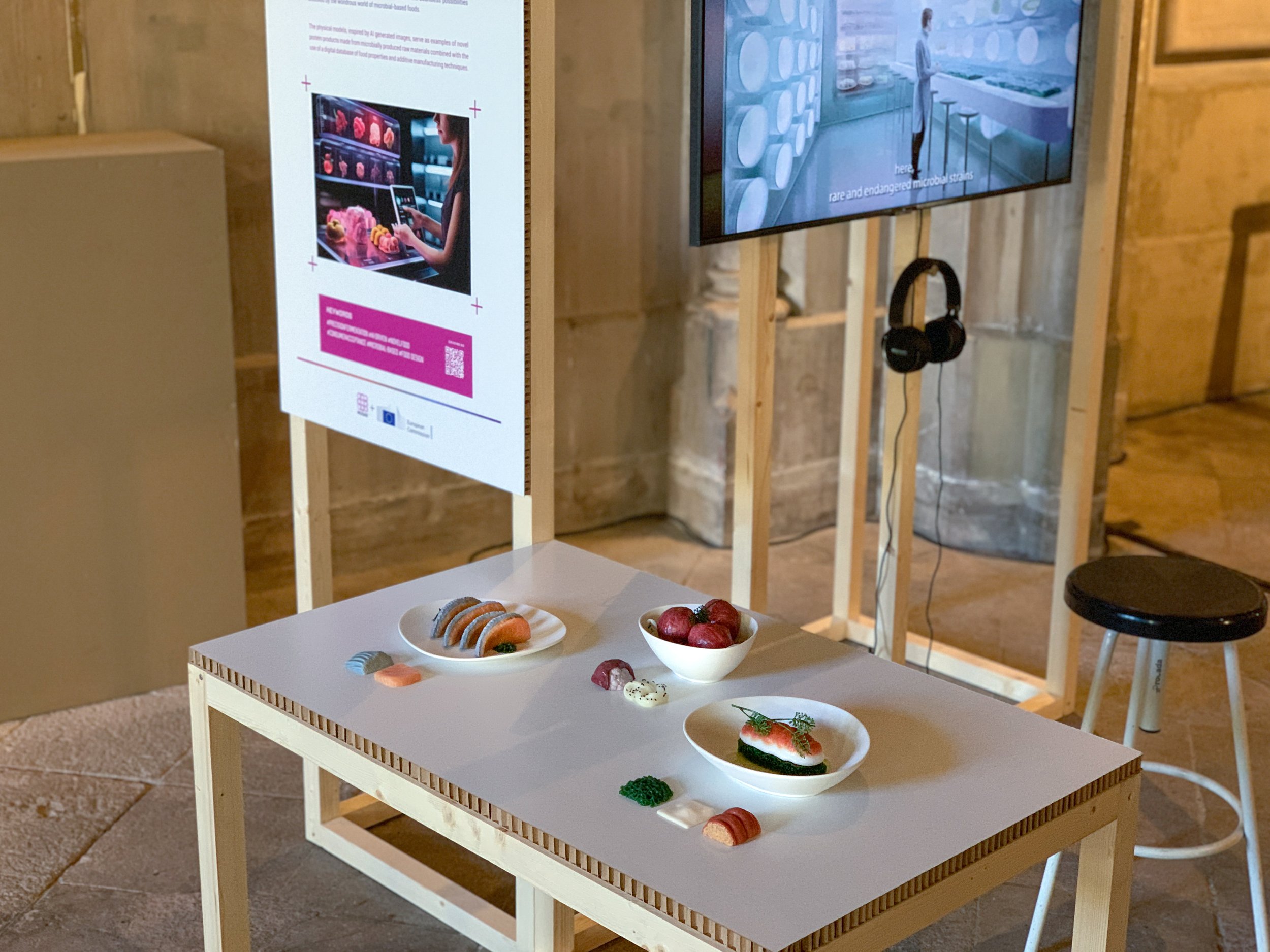
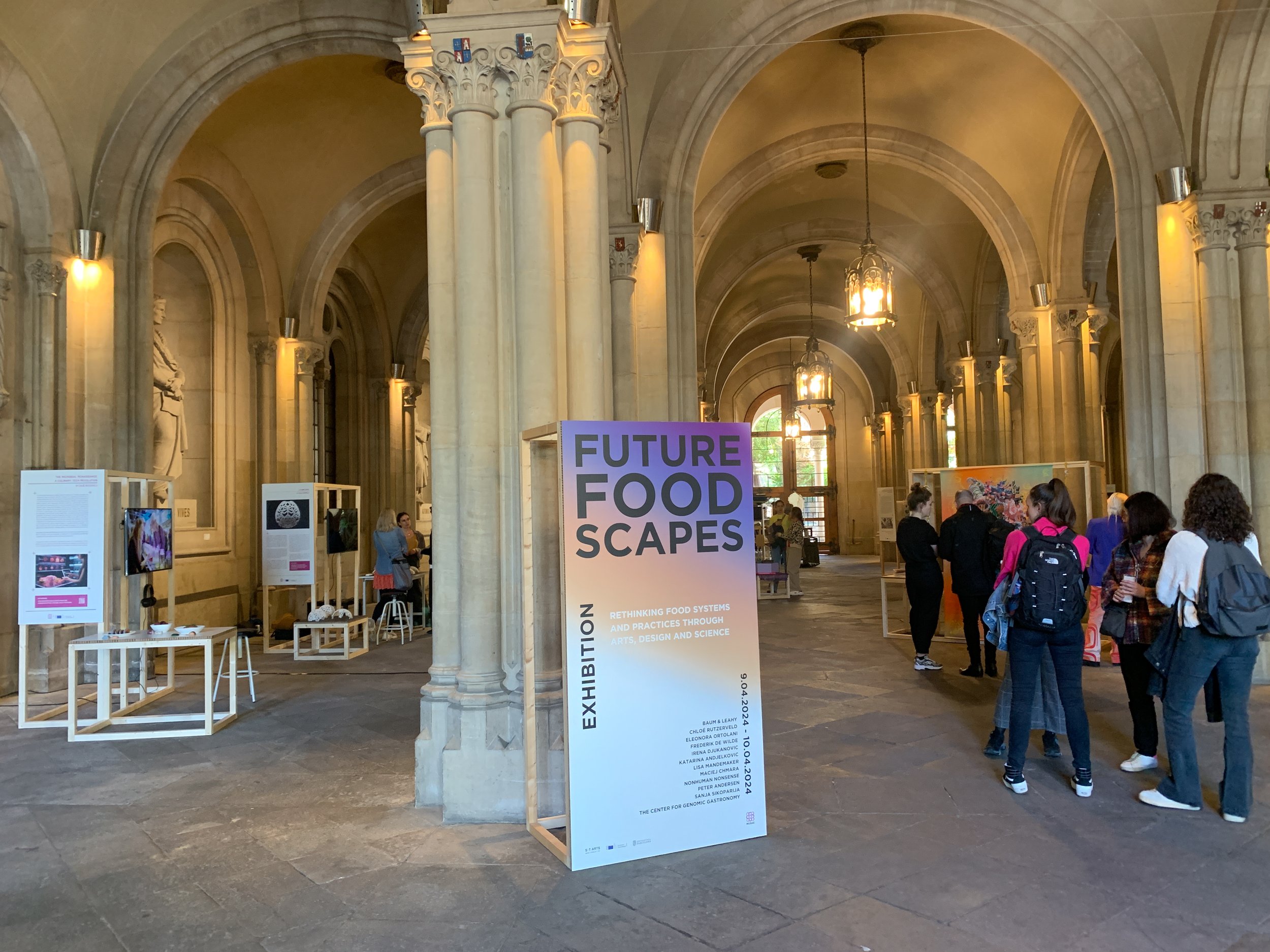
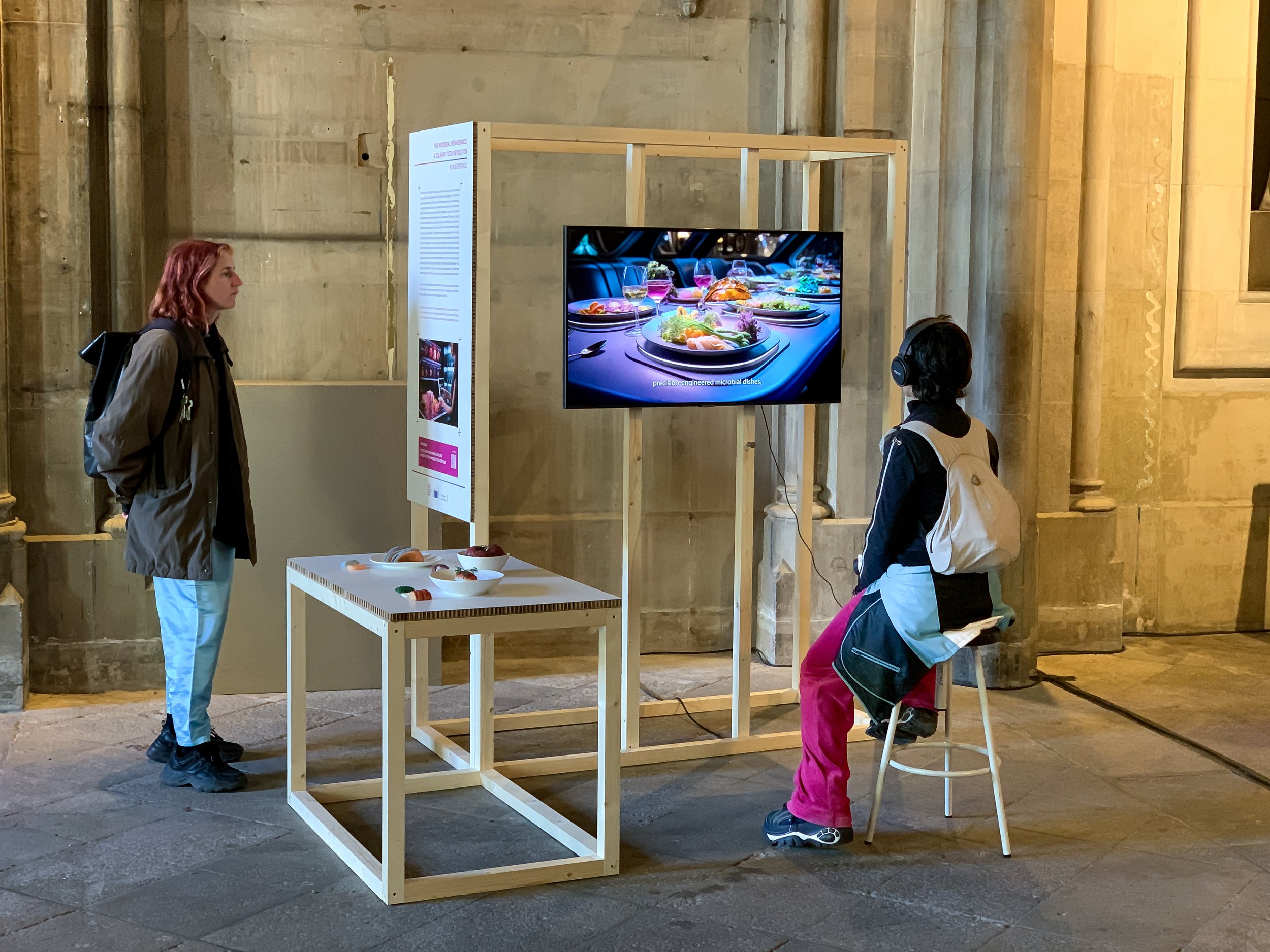
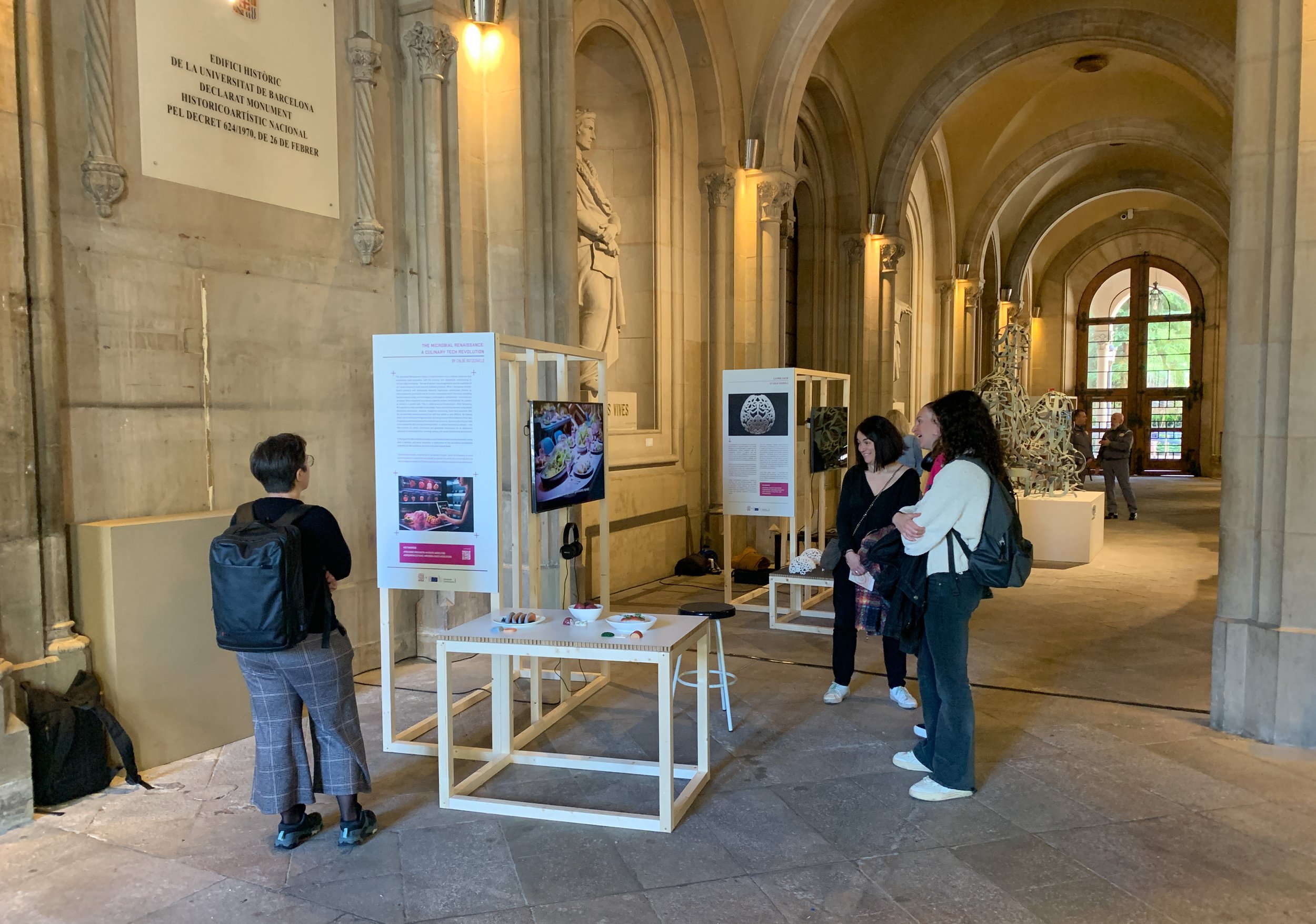
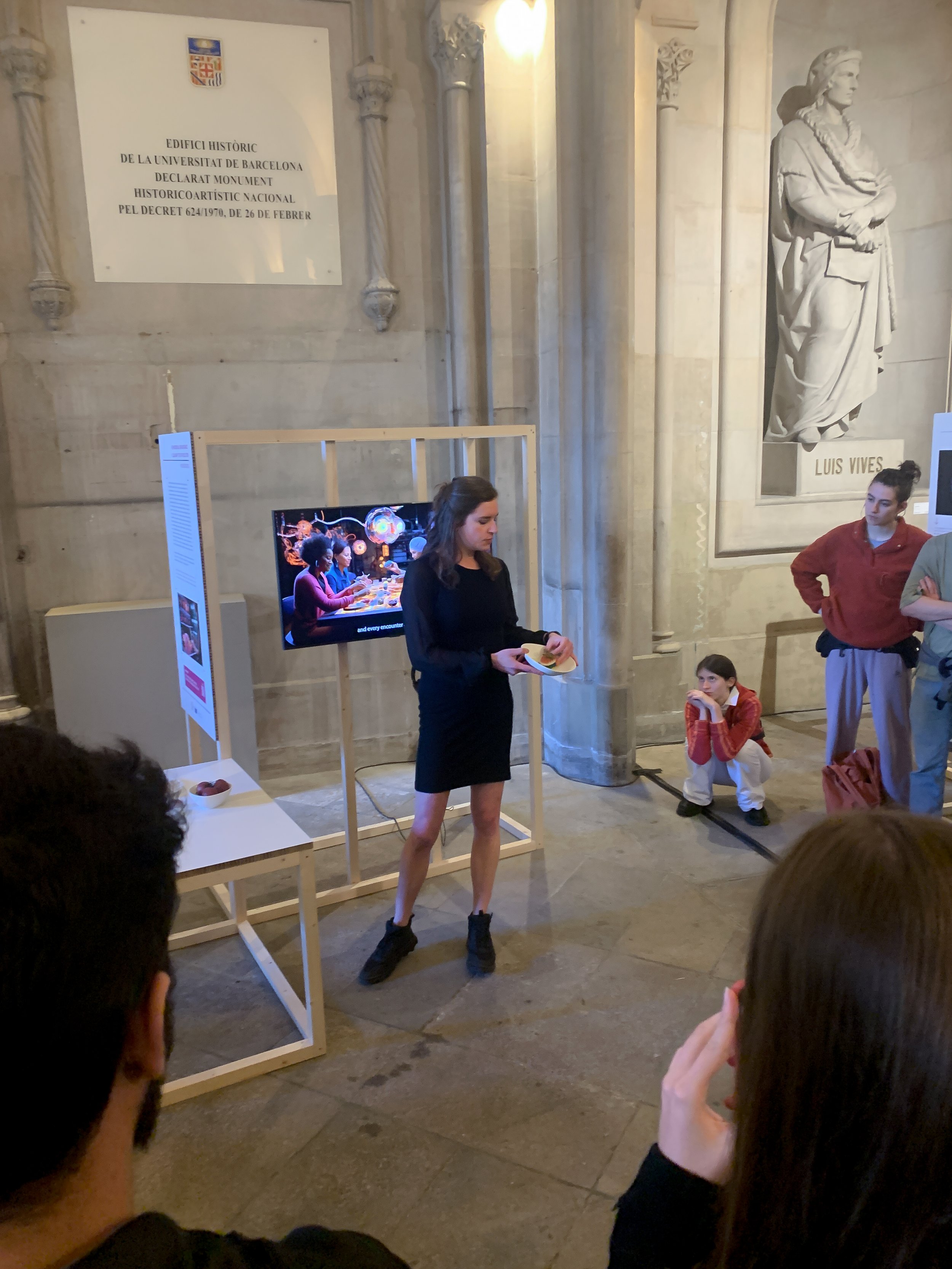
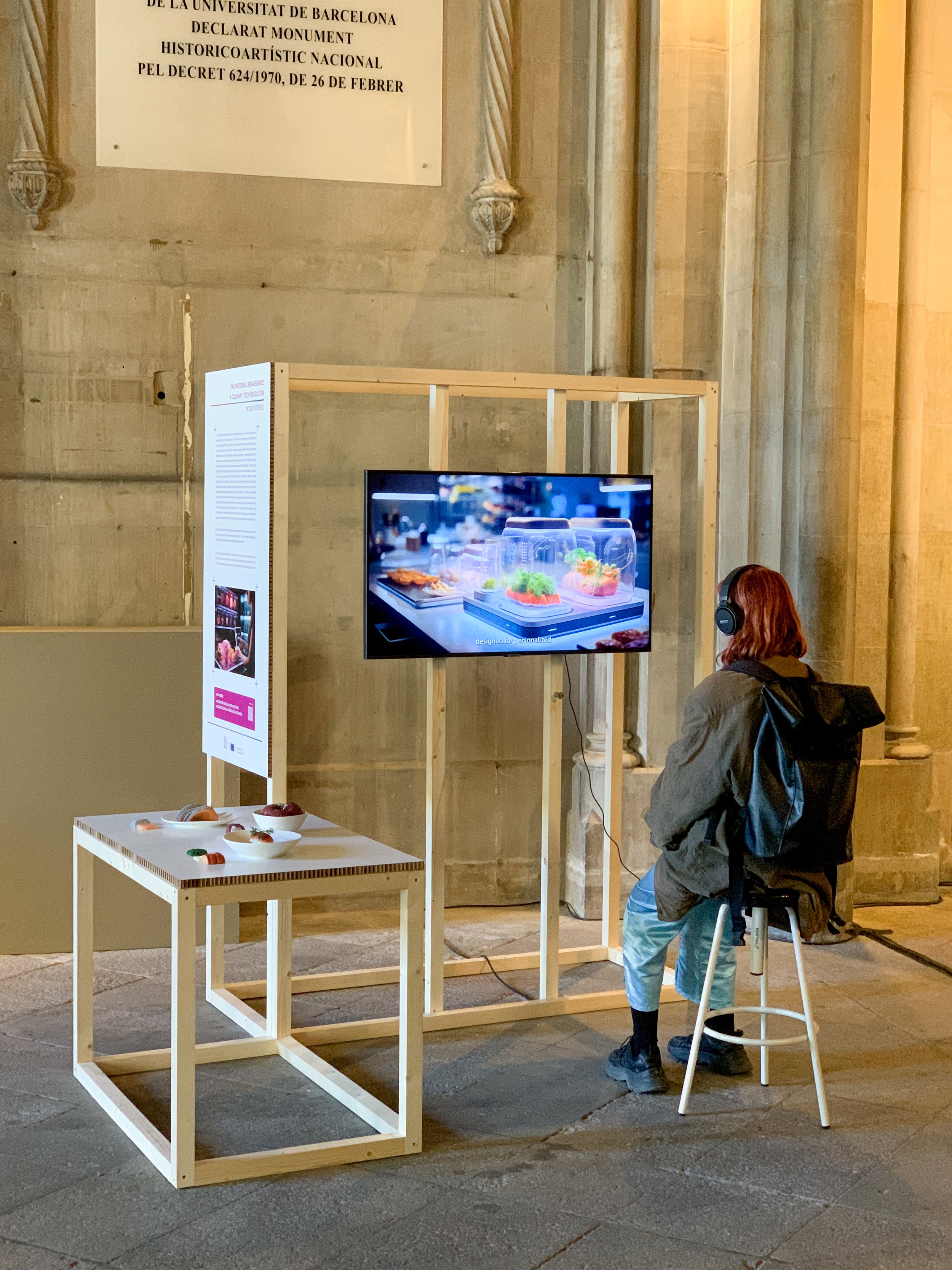

The physical models, inspired by AI generated images, serve as examples of novel protein products made from microbially produced raw materials combined with the use of a digital database of food properties and additive manufacturing techniques.
Material | silicone, resin, epoxy.

